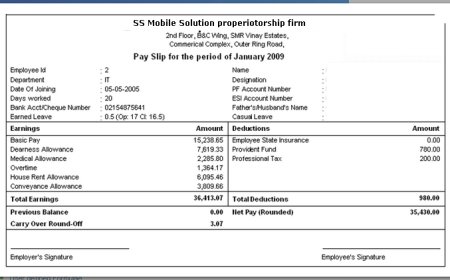how to manage a remote team effectively
Managing a remote team effectively is all about balancing clarity, trust, and communication. Without the benefit of face-to-face interaction, leaders must intentionally create systems that keep everyone aligned, engaged, and productive—no matter where they’re working from.
Heres a complete guide to managing a remote team successfully:
? 1. Set Clear Expectations from Day One
Unclear expectations = miscommunication, confusion, and missed deadlines.
Define:
-
Work hours or core availability windows (especially across time zones)
-
Communication protocols (e.g., reply to Slack within 2 hours)
-
Project goals, priorities, and deadlines
-
Performance metrics and accountability standards
? Tip: Document everything in a shared place like Notion, Google Docs, or Confluence.
? 2. Use the Right Communication Tools
Your tools are your teams lifeline.
Must-have tools:
-
Slack / Microsoft Teams Quick chats and updates
-
Zoom / Google Meet Video meetings and face time
-
Loom Async video updates
-
Trello / Asana / ClickUp Task and project management
-
Google Drive / Dropbox File sharing and collaboration
? Set rules for which tools are used for what (e.g., Slack for chat, Zoom for stand-ups).
? 3. Manage by Outcomes, Not Activity
Avoid micromanaging. Focus on what gets done, not how many hours are logged.
Best practices:
-
Use OKRs or KPIs to track progress
-
Set clear deliverables with deadlines
-
Encourage autonomy and ownership
? Schedule weekly check-ins to review goals, challenges, and next steps.
? 4. Foster Connection and Team Culture
Remote teams often feel disconnectedunless you actively build relationships.
Ideas:
-
Start meetings with a casual icebreaker
-
Celebrate wins, birthdays, and workiversaries
-
Create Slack channels for non-work chat (#random, #pets, #wins)
-
Schedule virtual coffee chats or game hours
? Culture doesnt happen by accidentit happens by design.
? 5. Create a Central Source of Truth
Avoid where do I find that? syndrome.
Use:
-
Notion / Confluence SOPs, team info, onboarding docs
-
Google Drive Organized files and folders
-
ClickUp / Trello Assignments, roadmaps, status updates
? If its not documented, it doesnt exist.
? 6. Balance Async and Real-Time Collaboration
Not everyone needs to be online at the same time.
Async tools:
-
Loom Record feedback or updates
-
Google Docs Leave comments and suggestions
-
Trello / Asana Assign tasks and track progress
? Schedule live meetings only when necessary. Protect time for deep work.
? 7. Give and Request Regular Feedback
Feedback keeps your team aligned and growing.
Feedback rhythms:
-
Weekly 1:1s with each team member
-
Monthly or quarterly performance reviews
-
Post-project retrospectives
-
Anonymous feedback surveys (via Google Forms or Polly)
? Ask: Whats going well? Whats one thing we could do better?
? 8. Set Boundaries to Avoid Burnout
Remote work can blur the line between home and work life.
Tips:
-
Encourage team to take breaks and log off on time
-
Dont expect 24/7 responsiveness
-
Offer no meeting days for deep work
-
Model balance by doing it yourself
? A burnt-out team isnt a productive one.
? 9. Document and Improve Your Processes
As your team grows, systems should evolve too.
Document:
-
Onboarding workflows
-
Meeting cadences and templates
-
Project handoff steps
-
Performance expectations and reviews
? Make it easy for new hires to jump in and succeed.
? 10. Track Performance with Visibility, Not Surveillance
Focus on:
-
Clear goals and deliverables
-
Collaborative tools to see progress
-
Shared dashboards for transparency
Avoid:
-
Monitoring software or invasive time trackers
? Trust drives productivity. Respect their autonomy.
? Quick Summary: Remote Team Management Essentials
| Area | Tip |
|---|---|
| Communication | Use Slack, Zoom, and Loom wisely |
| Productivity | Manage by results, not time |
| Culture | Create fun rituals and celebrate wins |
| Tools | Pick a unified stack and train the team on it |
| Boundaries | Encourage mental health and sustainable pacing |
| Feedback | Use regular 1:1s and async check-ins |
Final Thought:
Remote teams dont need micromanagersthey need clarity, trust, and rhythm.
Important Links
Dairy Farm Walk Condo Showflat
Dairy Farm Walk Condo Developer
How to Check Property Boundaries Before Buying: A Simple Guide for Homebuyers
How to Spot a Great Real Estate Deal Fast
How to Protect Your Real Estate Investments from Inflation in 2025
10 Things to Avoid During the Home Loan Process
Dairy Farm Walk Condo Project Details
Dairy Farm Walk Condo Location
Dairy Farm Walk Condo Floor Plans
Dairy Farm Walk Condo Project Details
Dairy Farm Walk Condo Location
Dairy Farm Walk Condo Site Plan
Dairy Farm Walk Condo Floor Plans









































